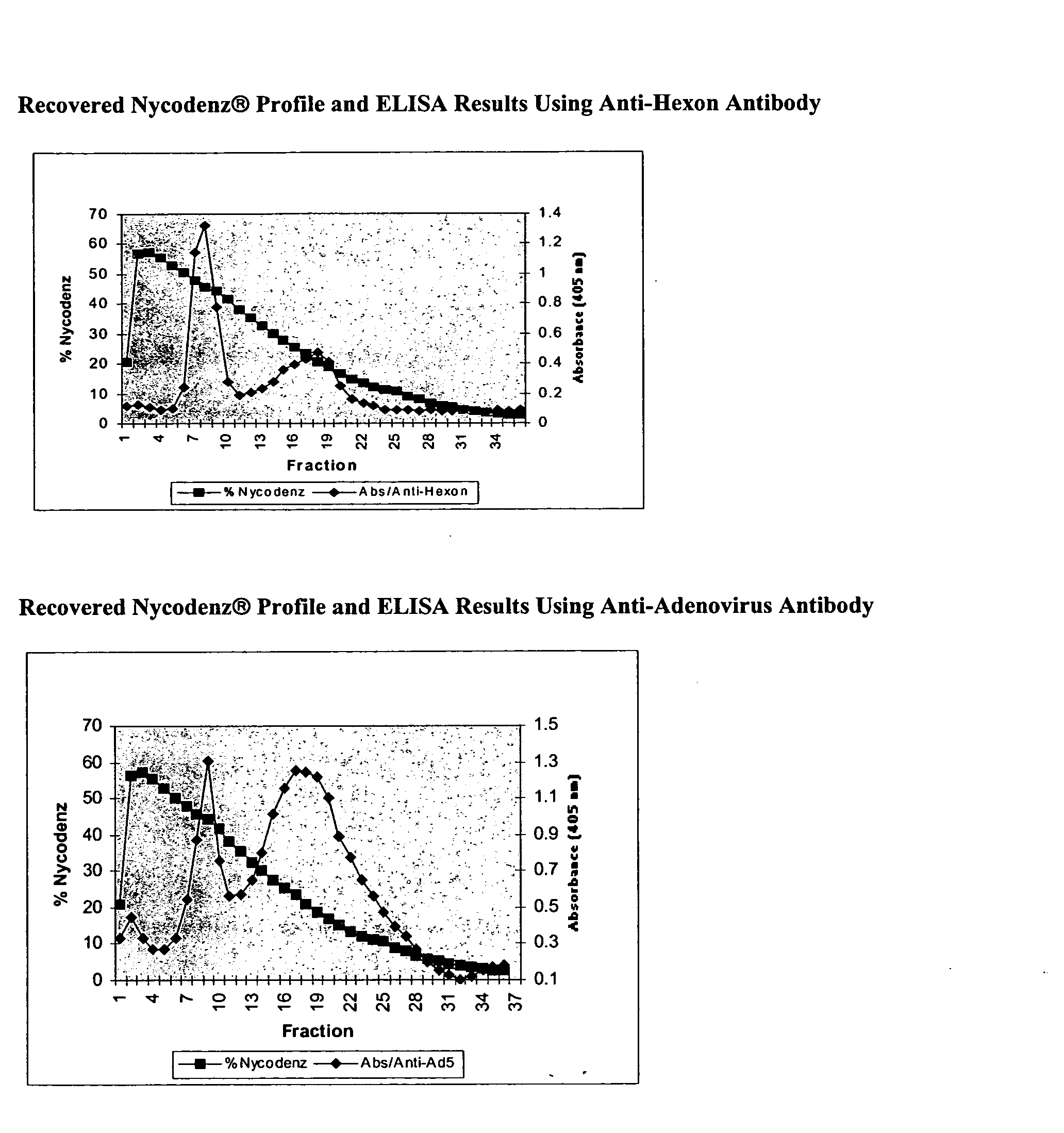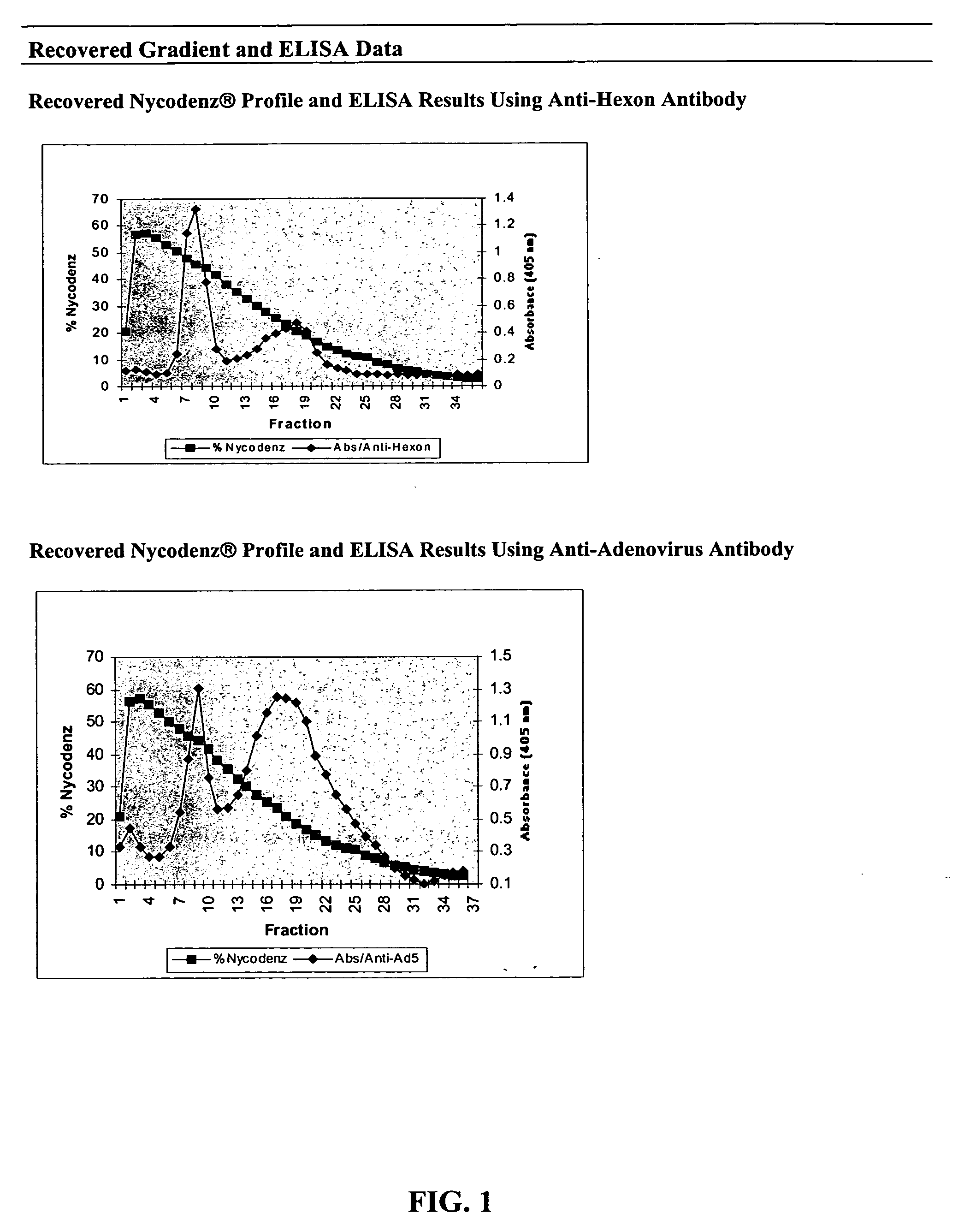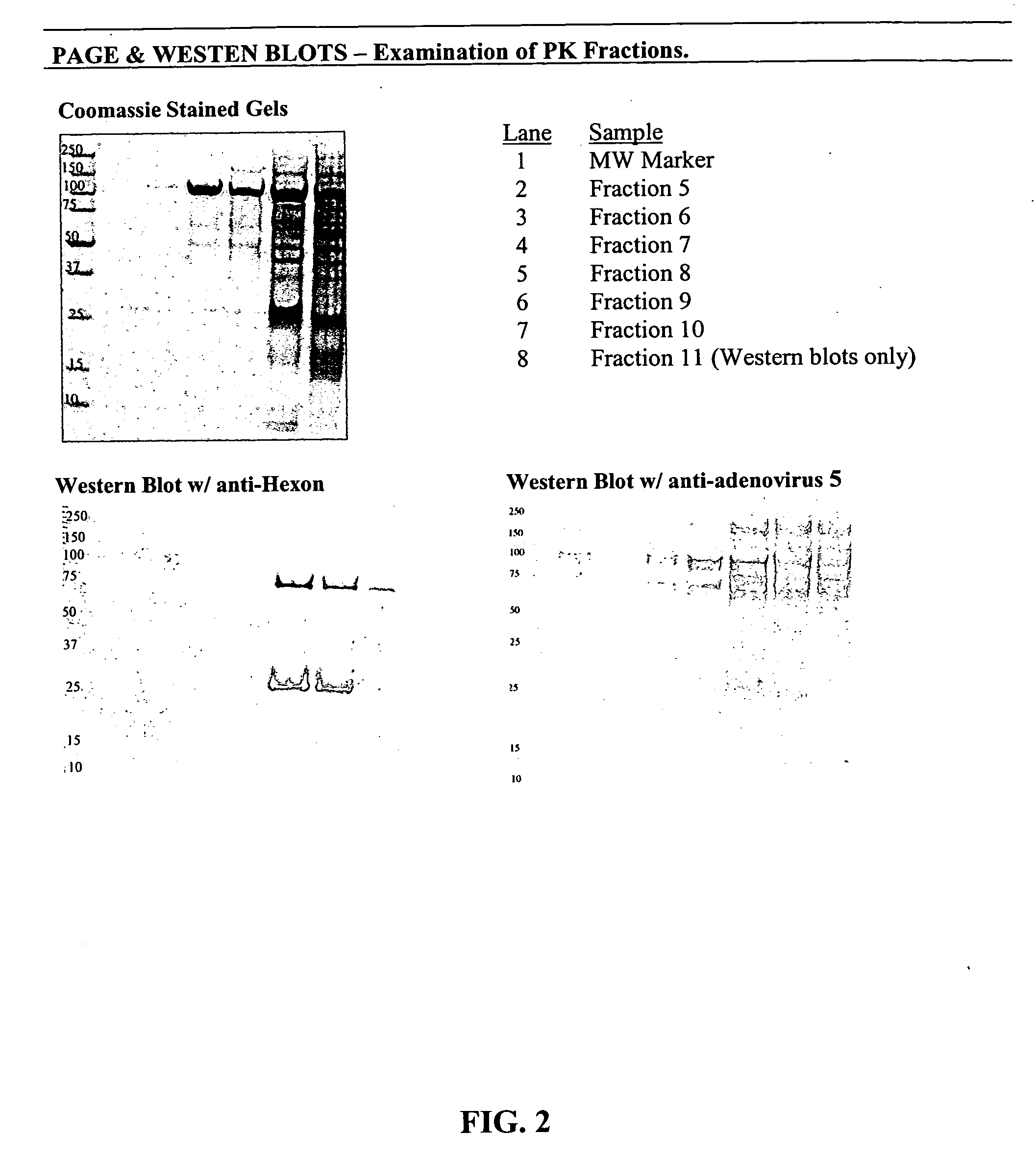Processes and compositions for adenovirus purification using continuous flow centrifugation
a technology of adenovirus and purification process, which is applied in the direction of centrifugal force sediment separation, separation process, biochemistry apparatus and processes, etc., can solve the problems of inability to target tissues with specificity, inability to use non-viral vectors with less efficiency than viral vectors, and inability to recombinant techniques employing therapeutic genes to treat a variety of genetic and acquired disorders
- Summary
- Abstract
- Description
- Claims
- Application Information
AI Technical Summary
Benefits of technology
Problems solved by technology
Method used
Image
Examples
example 1
Purification of Recombinant Adenovirus
[0066] Adenoviruses are eukaryotic DNA viruses that are capable of delivering transgenes to a variety of cell types. The results herein encompass a new technique for large-scale purification of intact, recombinant adenovirus using continuous flow ultracentrifugation.
Construction of Recombinant Adenoviral Plasmids
[0067] The gene encoding green fluorescent protein (GFP) was cloned into an adenovirus pADTrack-CMV shuttle vector by polymerase chain reaction (PCR). This shuttle vector contains a cytomegalovirus (CMV) promoter, driving expression of the gene of interest, and stretches of inverted terminal repeats (ITR) flanking a multiple cloning site. The pAdEasy-1 plasmid contains most of the human adenovirus serotype 5 genome, and also contains the aforementioned ITR sequences. It is at the ITR sites that homologous recombination between the two plasmids occurs.
[0068] The pADTrack-CMV shuttle vector was linearized by restriction digestion to e...
example 2
Detection and Analysis of Recombinant Adenovirus in PKII Purified Fractions
[0076] The collected fractions were analyzed by: (1) enzyme-linked immunosorbent assay (ELISA) and (2) polyacrylamide gel electrophoresis followed by Western blotting using specific antibodies directed against adenoviral proteins.
Enzyme-linked Immunosorbent Assay (LISA)
[0077] The collected fractions were analyzed by ELISA using a monoclonal antibody directed against hexon capsid proteins (Research Diagnostics; Flanders, N.J.) and a polyclonal anti-adenovirus serotype 5 antibody, which recognizes the hexon, penton, and fiber proteins of the capsid (ATCC). Two distinct peaks of material were identified with both antibodies (FIG. 1). The higher density peak identified with the monoclonal antibody was comprised of fractions 7, 8, and 9, corresponding to an isodense point of 45% Nycodenz® (˜1.24 g / cm3) while the peak identified with the polyclonal antibody was comprised of fractions 8, 9, and 10. The lower den...
example 3
Comparison of Viral Yield Between PKII and CsCl Purified Materials
Coomassie Staining and Western Blotting
[0079] Fraction is collected from PKII centrifugation and analytical CsCl gradients were analyzed by Nu-PAGE, followed by Coomassie staining and Western blotting with the polyclonal anti-. adenovirus antibody (FIG. 3). Each well was loaded with 2 μg of protein for Coomassie-stained gels and 1 μg of protein for Western blots. Fractions 9 and 10 (Lanes 3&4) from PKII centrifugation show similar banding profiles compared to CsCl purified samples (Lane 6). Fraction 18 (Lane 5) corresponds to the lower density peak identified in the aforementioned ELISA analyses and appeared to lack two lighter molecular weight bands (ranging between 18 and 28 kD) appearing in lanes containing fractions collected from the higher density peak. Fraction 8 (Lane 2) showed different proportions of proteins detected on the Coomassie-stained gel than fractions 9 and 10. The bands at ˜100 kD appeared simi...
PUM
| Property | Measurement | Unit |
|---|---|---|
| Fraction | aaaaa | aaaaa |
| Fraction | aaaaa | aaaaa |
| Fraction | aaaaa | aaaaa |
Abstract
Description
Claims
Application Information
 Login to View More
Login to View More - R&D
- Intellectual Property
- Life Sciences
- Materials
- Tech Scout
- Unparalleled Data Quality
- Higher Quality Content
- 60% Fewer Hallucinations
Browse by: Latest US Patents, China's latest patents, Technical Efficacy Thesaurus, Application Domain, Technology Topic, Popular Technical Reports.
© 2025 PatSnap. All rights reserved.Legal|Privacy policy|Modern Slavery Act Transparency Statement|Sitemap|About US| Contact US: help@patsnap.com



